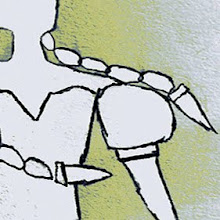From about 1620 the well-known blue tiles appeared beside the polychrome ones [in the Netherlands]. On blue tiles, the pattern is painted in blue on the opaque white tin-glaze sub-layer. Why in blue?
About the year 1602 the first blue Chinese porcelain came to Holland as a result of the trade with China.
Antique Annamese oil jar, 15th century, height: 5 cm
Millions of China bowls, jugs and dishes were shipped to Amsterdam by the East Indian Company. From Amsterdam the costly China was further traded through Europe. This Chinese porcelain was much in demand and expensive.
The Delft potters and those in other towns tried to imitate the Chinese porcelain and applied the Chinese decorations to the earthenware they made.
Between 1640 and 1800 Chinese porcelain was most successfully imitated in Delft.
View of Delft - painting by Johannes Vermeer, circa 1660-1661
The potters called themselves porcelain-potters. This was not correct because the products they made were of earthenware. In Europe the process of making China porcelain was not yet known at that time.
The Delft blue became world famous, to such an extend that it became the general name for all earthenware objects and tiles which were painted in the same blue color, even if they not had been made in Delft.
Delft blue is known all over the world.
Source: History of the Dutch tile
Geeky anachronism!













